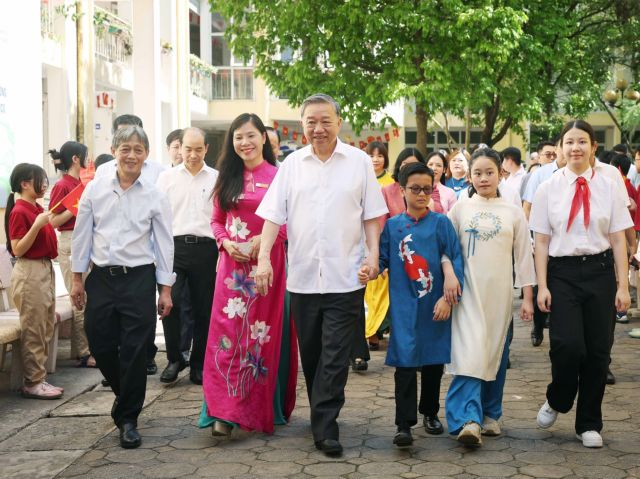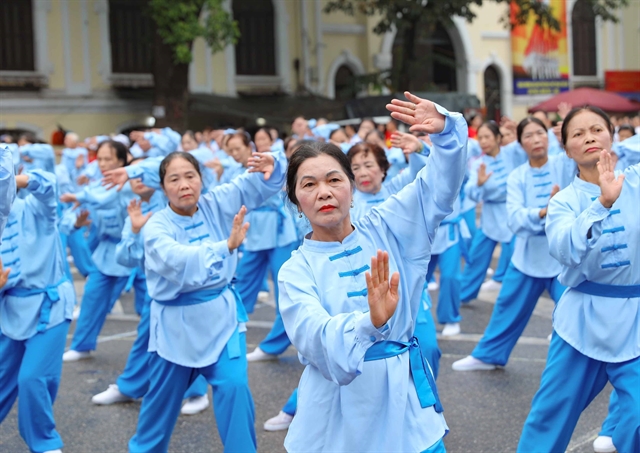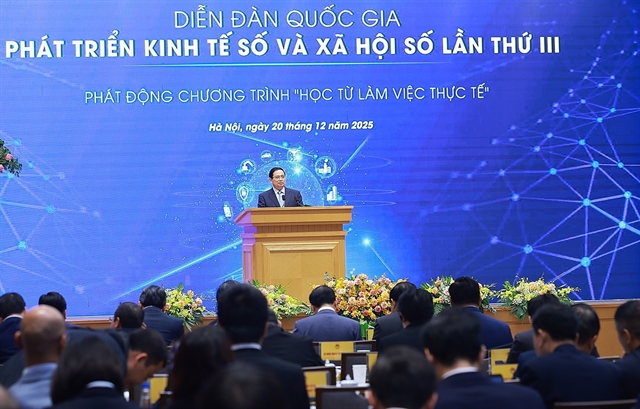 Opinion
Opinion

 |
| Professor Giang Thanh Long, senior lecturer at the National Economics University. Photo neu.edu.vn |
Professor Giang Thanh Long, senior lecturer at the National Economics University, talked with Nhân dân (The People) online newspaper about appropriate social security policies to help Việt Nam adapt to rapid population ageing as the draft amended Law on Social Insurance is about to be submitted to the National Assembly in the near future.
Việt Nam's population has reached 100 million people and will enter the ageing population in a short time. How will it affect social security policies, especially social insurance policies?
The milestone of 100 million people clearly shows Việt Nam's position in terms of demographics in the world as well as in the Association of Southeast Asian Nations (ASEAN). With the population size, Việt Nam ranks 15th in terms of population in the world and third in ASEAN (after Indonesia and the Philippines).
With a population of 100 million, the country has about 67 million people between the ages of 15 and 64. It means that more than two-thirds of the population are in the labour force. This has huge potential if we take advantage of it.
At the same time, the country also has nearly 13 million elderly people (age 60 and older), so taking care of the elderly is also a major policy issue. Many middle-aged people today will become the elderly in a while, so the question is how to make that middle-aged population secure in terms of income and health when they become elderly.
The General Statistics Office’s forecast for the 2019-69 period says that the country will end the period of "golden population structure" in 2039, only three years after the country enters the period of "ageing" population. At this time, if we do not take advantage of the opportunity from the "golden population structure", we will miss the opportunity to well prepare for the period of "ageing" population.
Regarding the social insurance system, data by the end of last year shows that only about 38 per cent of the labour force participates in social insurance. Up to 62 per cent of the labour force have yet to participate in the social insurance. It is believed to be a huge challenge for the country now and in the future. According to research, the majority of people, who have yet to participate in the social insurance, are informal workers.
If the rate of people participating in the social insurance is not improved, it will be a huge challenge for the country. Although some of the elderly do not have a pension or social allowance, they still secure themselves with other sources of income. However, the reality shows that the percentage of such people in the elderly population are very low, most of the elderly people fall into difficulties, especially those who face health problems and have to live with the support of their children and grandchildren.
It has happened even in the high-income countries of the Organisation for Economic Co-operation and Development (OECD). In particular, the deep and wide economic shock, triggered by the recent COVID-19 pandemic, shows that many elderly people could previously rely on their children and grandchildren, but now they have lost their fulcrum when their own children and grandchildren are also struggling to maintain their income and ensure their health.
Therefore, to address these challenges, it is imperative to expand the social insurance system both horizontally (increasing coverage of participants) and vertically (improving benefits).
One of the amendments of the draft amended Law on Social Insurance is the addition of the pension benefit layer. What do you think about the amendment? Could you share about the experiences of other countries on the issue?
According to research of the International Labour Organization (ILO), many countries showed that there is no other way than a multi-layered social insurance system to increase the coverage both horizontally and vertically as mentioned above. The multi-layered system connects contribution and non-contribution mechanisms and creates multi-layered income for participants of the social insurance system.
Some high-income countries in the region (such as Japan and South Korea) and middle-income countries (such as China and Thailand) have designed their pension systems in the direction to ensure diversified income safety net for the elderly. For example, the Chinese government supports rural workers to participate in the social insurance through co-contributions (to increase coverage) and links to social benefits to ensure that all elderly people in both rural and urban areas receive pension.
In Thailand, a universal pension system has been introduced so that everyone aged 60 and over receives THB800 (US$23) per month. The policy not only contributes to not leaving anyone behind but also improves the income and social status of the elderly.
In Việt Nam, the pension system and the social welfare system are separate. Specifically, the pension system is designed for those who contribute to the system, while the social welfare system is designed for people aged between 60 and 79 according to family circumstances or 80 years old or older if they have no pension and other social insurance benefits.
The two systems need to be closely connected to ensure a multi-layered income network, leaving no one behind. Many studies have shown that the position of the elderly is improved even with minimal allowance. They do not feel completely dependent on others and it also helps to improve their role in their household. The creation of old-age income will improve the lives of the elderly in economic, social and health aspects. This is the reason why multi-layered social insurance policies should be promoted.
 |
| Elderly people exercise in Hà Nội. — VNA/VNS Photo Thanh Tùng |
The ageing speed is fast while the speed of social insurance coverage is slow in Việt Nam. What are your thoughts on this?
Many countries are talking about the sandwich generation. It is the story of the group of people, who have old parents as well as young children, so they have to take care both of their parents and their children as well as take care of themselves.
Many studies in China have warned about the situation of 6-1 and 1-6 with the one-child policy. It is a situation where a child is born with up to six care-givers (two grandparents, two maternal grandparents, a father and a mother), but when the baby becomes an adult, he or she might have to take care the six people if the six people do not participate in the social insurance to get old-age income. It will be an income-security tragedy, and some researchers warn of "intergenerational exploitation" - meaning young workers must pay higher taxes to fund the State' social welfare system to ensure the life of the elderly generation who do not participate in the social insurance. Those young workers also have to pay social insurance for themselves. Thus, they will have to bear the “double burden”.
For Việt Nam, the status of sandwich generation is also an existence when the rate of labourers participating in the social insurance is still low, unable to guarantee their own social security. Then, the next generation will have to burden to ensure the minimum standard of living from the social allowance for the elderly people. With the current ageing of the population, if there is no appropriate decision, the problem of the sandwich generation will be a great challenge for the country.
What issues should be paid attention to in the draft amended Law on Social Insurance?
In terms of demographics, the country has both advantages and disadvantages. The labour market is abundant, but the number of employees participating in the social insurance is not high. The number is levelling off partly due to the negative impacts of the COVID-19 pandemic.
At the same time, the labour market is abundant but most of them are manual labourers with low productivity and low income. They contribute to the social insurance fund at a low level, so they will receive a low pension at retired age.
Based on these facts, the draft amended Law on Social Insurance is advised to propose gradual reforms to ensure appropriate participants and benefits.
For example, the draft amended Law on Social Insurance should submit maternity benefits for voluntary social insurance participants, and the benefits will be paid by the State budget instead of the social insurance fund. Retirees with free health insurance should also be covered by the State budget.
To ensure expenditure, the Government is suggested to consider policies suitable to the needs of labourers. This is also one way to ensure the feasibility of the draft amended Law on Social Insurance and its possibility to meet many people's expectations. — VNS




